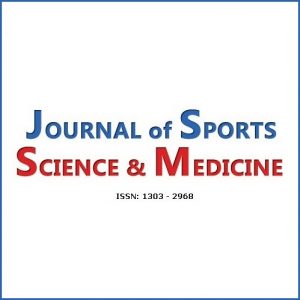Publications

Effects of Maximal Eccentric Trunk Extensor Exercise on Lumbar Extramuscular Connective Tissue: A Matched-Pairs Ultrasound Study
Authors: Andreas Brandl 1, 2, 3, Jan Wilke 4, Christoph Egner 2, Tobias Schmidt 5, 6, Robert Schleip 2, 7
Affiliations:
- Department of Sports Medicine, Institute for Human Movement Science, Faculty for Psychology and Human Movement Science, University of Hamburg, Hamburg, Germany
- Department for Medical Professions, Diploma Hochschule, Bad Sooden-Allendorf, Germany
- Vienna School of Osteopathy, Vienna, Austria
- Department of Movement Sciences, University of Klagenfurt, Klagenfurt, Austria
- Osteopathic Research Institute, Hamburg, Germany
- Institute of Interdisciplinary Exercise Science and Sports Medicine, MSH Medical School Hamburg, Hamburg, Germany
- Department of Sport and Health Sciences, Conservative and Rehabilitative Orthopedics, Technical University of Munich, Munich, Germany
Journal: Journal of Sports Science & Medicine - August 2023, Volume 22, Pages 446-453 (DOI: 10.52082/jssm.2023.446)
-
Field & Applications:
- Sport
- Fatigue / Overtraining
Recently, it has been shown that the extramuscular connective tissue (ECT) is likely involved in delayed onset muscle soreness (DOMS). Therefore, the aim of the present study was to investigate the effects of maximal trunk extension eccentric exercise (EE) on ECT thickness, self-reported DOMS, ECT stiffness, skin temperature, and possible correlations between these outcomes.
Healthy adults (n = 16, 29.34 ± 9.87 years) performed fatiguing EE of the trunk. A group of highly active individuals (TR, n = 8, > 14 h of sport per week) was compared with a group of less active individuals (UTR, n = 8, < 2 h of sport per week). Ultrasound measurements of ECT thickness, stiffness with MyotonPRO and IndentoPro, skin temperature with infrared thermography, and pain on palpation (100 mm visual analog scale, VAS) as a surrogate for DOMS were recorded before (t0), immediately (t1), 24 h (t24), and 48 h (t48) after EE.
ECT thickness increased after EE from t0 to t24 (5.96 mm to 7.10 mm, p = 0.007) and from t0 to t48 (5.96 mm to 7.21 mm, p < 0.001). VAS also increased from t0 to t24 (15.6 mm to 23.8 mm, p < 0.001) and from t0 to t48 (15.6 mm to 22.8 mm, p < 0.001). Skin temperature increased from t1 to t24 (31.6° Celsius to 32.7° Celsius, p = 0.032) and t1 to t48 (31.6° Celsius to 32.9° Celsius, p = 0.003), while stiffness remained unchanged (p > 0.05). Correlation analysis revealed no linear relationship between the outcomes within the 48-hour measurement period.
The results may confirm previous findings of possible ECT involvement in the genesis of DOMS in the extremities also for the paraspinal ECT of trunk extensors. Subsequent work should focus on possible interventions targeting the ECT to prevent or reduce DOMS after strenuous muscle EE.
Keywords: DOMS, ultrasound, connective tissue, eccentric exercise
A maximal EE protocol for trunk extensors increased ECT thickness, skin temperature, and self-reported DOMS. This reinforces the hypothesis that extramuscular connective tissue is more of a factor in DOMS development than the muscle itself. Coaches and sports professionals should therefore consider addressing ECT through adapted exercises to prevent or reduce DOMS after strenuous muscle EE.


